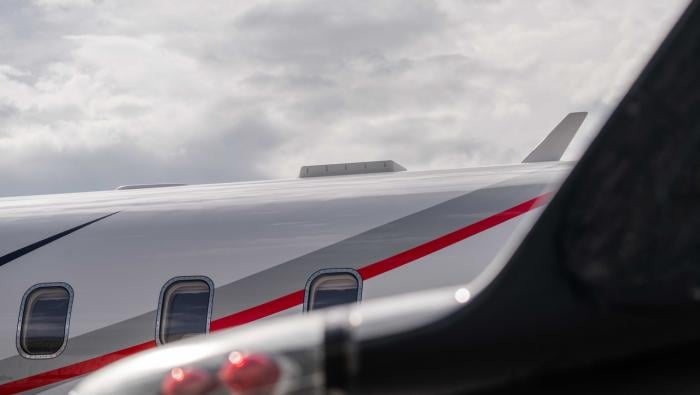After a difficult year in 2003, Brazil’s largest executive charter company, TAM Taxi Aéreo Marília, saw better times last year, when its revenues increased to Real 105 million ($39.4 million)–up 15 percent from the previous year–with help from a recovery in the local economy. The increase in revenues was a result of growing demand on all fronts, including maintenance, aircraft sales and executive charter.
Last year TAM inaugurated its new 581,251-sq-ft business aircraft maintenance facilities, which it claims to be the largest and most modern in Latin America. The move has given TAM room to operate and grow, in addition to allowing TAM to service a broader array of aircraft. Besides to being an authorized Cessna service center, TAM also works on a wide range of other aircraft, including Dassault Falcon, Bombardier and Gulfstream jets.
The new complex, which includes three hangars and offices, enables TAM to double the number of aircraft it services from 60 to 120 per month. Given the company’s current rates of growth, TAM expects to invest an additional Real 6 million ($2.3 million) next year to build a new 87,187-sq-ft hangar. By 2009 TAM plans to be able to increase the number of airplanes that it services to 180 per month.
The move out of the city of São Paulo to Jundiaí has made it much easier for customers to drop off and collect their aircraft because Jundiaí Airport operates 24 hours a day. In addition, it is only 35 miles from São Paulo and has no commercial flights or time restrictions.
“Our clients love the new facilities because they are much more accessible,” TAM president Rui Aquino told AIN. The new complex is also much more accessible for single-engine aircraft. At São Paulo Congonhas Airport, single-engine airplanes are allowed to land only between 10 a.m. and 4 p.m. daily. “The restrictions made it very difficult for us to service single-engine aircraft, which make up a significant share of the market,” said Aquino.
Furthermore, with the increased space, TAM expects to boost from 70 to 85 percent the proportion of Brazil’s 3,330 Cessna jet, turboprop and piston aircraft that it services. “We also hope to service 100 percent of Brazil’s 144 Citations by 2007, as well as an additional 100 Caravans,” Aquino added. Over the next three years, 30 new Citations are expected to begin operating in Brazil. In addition, TAM will be servicing the entire Chilean Citation fleet and 80 percent of the Argentine Citation fleet.
There has also been growing demand for executive charter services, according to Aquino. The company is now operating 16 Caravans and six Citations in this role. During 2003, when demand for charter services was weak, TAM had considered selling part of its fleet, but after demand rebounded solidly last year the company ruled out selling any of its aircraft. While TAM’s fleet is unlikely to increase this year, Aquino said that the company is mulling fleet expansion next year.
Aircraft sales have also been strong over the past 12 months. The company sold 29 Cessnas last year–eight piston singles, eight turboprops and 13 jets. According to Aquino, sales should be strong this year in view of the improving economic circumstances in Brazil.
Aquino expects orders for Cessna’s new Mustang very light jet (VLJ) to be an important force in TAM’s growth this year. Since 2003 TAM has sold 36 Mustangs, and Aquino expects that number to climb as the first delivery dates approach. While many of the VLJs sold in the U.S. and elsewhere will be piloted by their owners, the TAM president said that, so far, none of the aircraft sold in Brazil will be owner-flown.
TAM is also seeing positive results in its newly created helicopter sales division. Since the company took over the rights to represent Bell Helicopter in Brazil in March last year, it had sold five aircraft as of late January. “We are very pleased with these results, given that sales of new helicopters are declining in Brazil,” said Aquino. TAM will participate in an upcoming auction to supply Brazil’s state-owned oil company, Petrobras, with new Bell/Agusta AB139 helicopters to support operations on the company’s offshore oil platforms.







